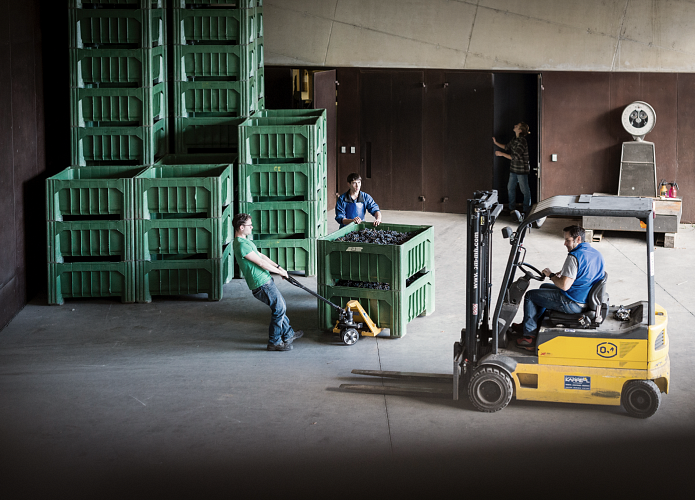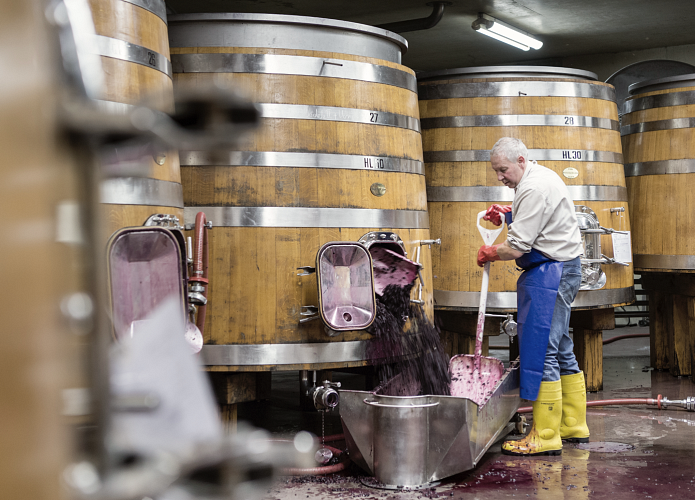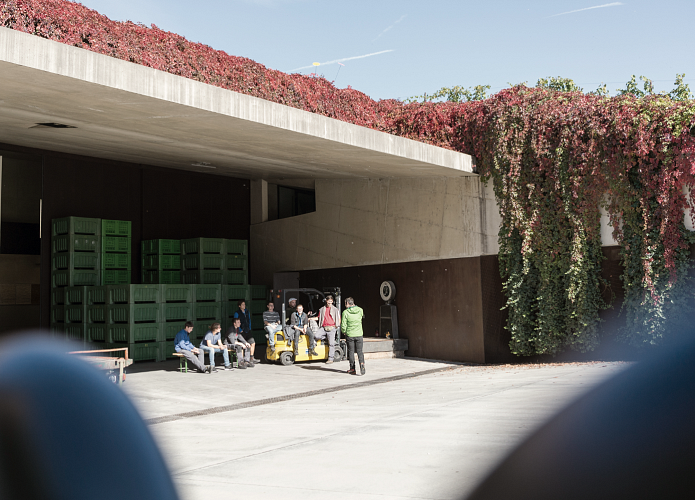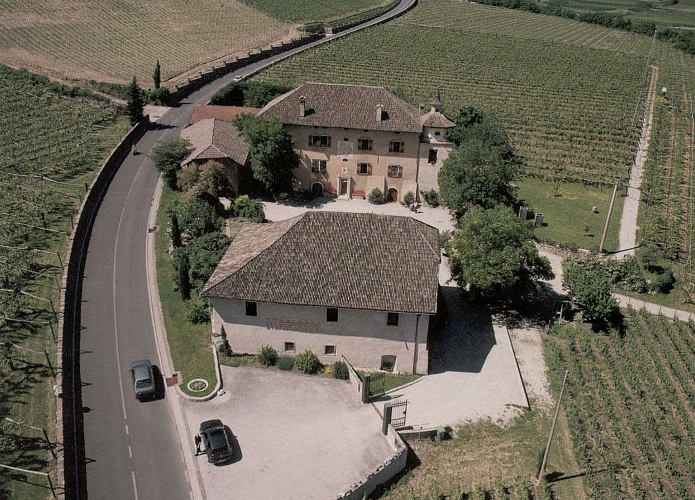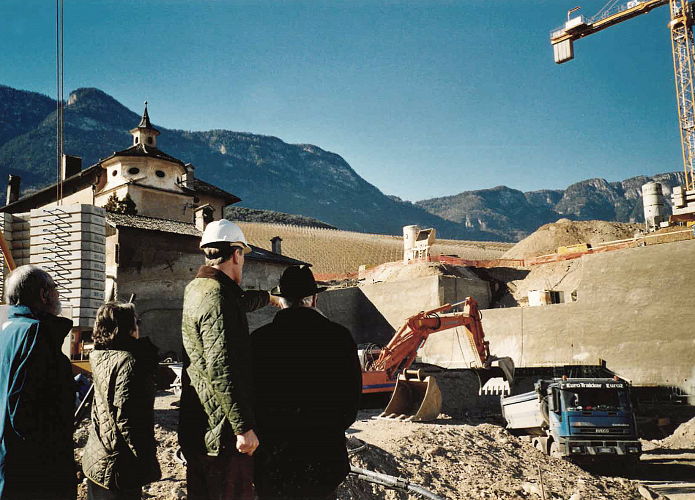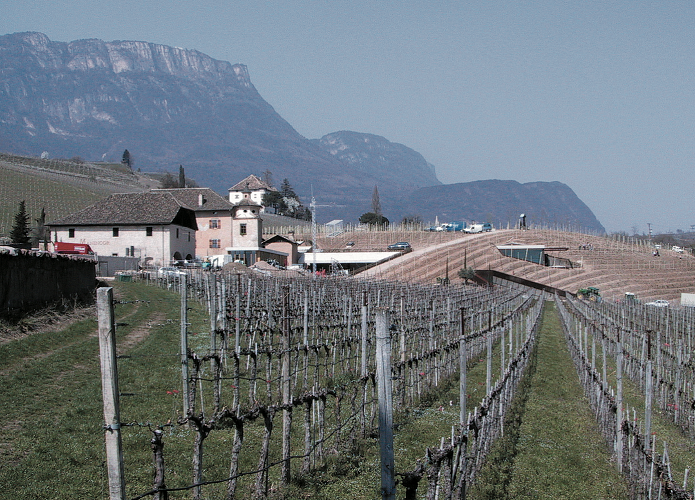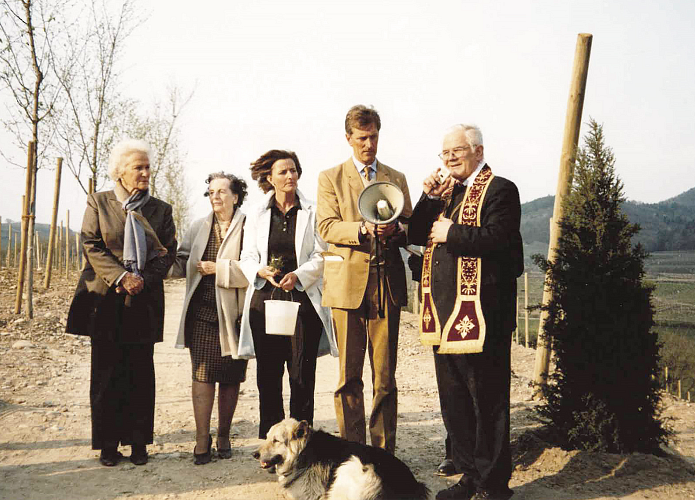New Winery
Think ahead, build on.
Converting and re-structuring an existing building
to make it modern and functional
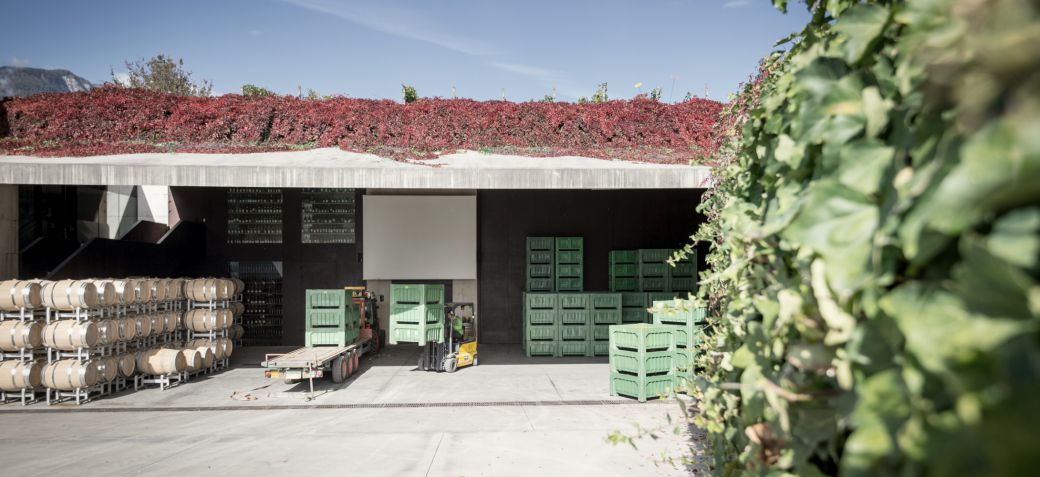
At the beginning the main challenge was the particular sensitivity of the site. From both a cultural and landscape perspective Manincor is an ensemble very much worth protecting and all interventions must be carried out with extreme care. On the other hand Count Michael Goëss-Enzenberg sets great store by the functionality and capacity of the new winery building.
He finally found the solution with a team of architects consisting of Walter Angonese from Kaltern and Rainer Köberl from Innsbruck. The cellar was constructed entirely below ground beneath the vineyard adjacent to the historical manor house. With the slanting walls and the arrangement of the ceilings the architecture takes account of the topography of the vineyard. Around 3,000 square metres of space spread over three underground floors accommodate large wooden casks, barrique barrels, fermentation vats, stainless steel tanks, presses, the bottling line and storage space for bottled wines.
The winery and cellar beneath the vineyard are more or less hidden from view and built of heavy facing concrete. Organic substances were added when material was mixed which change the colour and physical characteristics of the surface. The concrete is not grey but has the appearance of lime plaster. Over time it weathers and gradually begins to resemble the old vineyard walls. No prefabricated concrete elements were used. The entire structure was cast on the spot to produce a monolithic and at the same time complex building which, by means of a sophisticated system of formwork, bears intricate patterns and adapts to the surroundings in more than just an optical manner. An intelligent ventilation system ensures the ideal climate in the cellar purely by natural means. By controlling the exchange of air and feeding in humidity from the soil through special apertures and directing it to the cellar walls, the humidity in the barrique cellar is ideal, while the storage area for bottled wine remains dry.
The temperature in the underground cellar is regulated by heat exchanger pumps which draw geo-thermal heat from a depth of 260 feet and feeds it into the system. The same pump system can be used in summer to dissipate heat. In this way a constant temperature is maintained at ideal levels in the various parts of the cellar.
Text on architecture by Walter Angonese
51658

